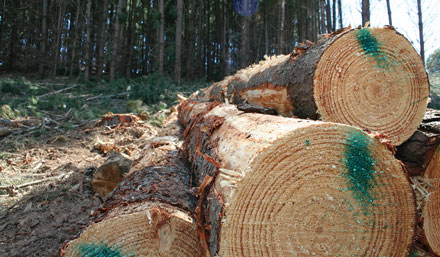Two new reports have been released by the Tasmania Forestry Hub outlining opportunities to support silvicultural interventions that could deliver additional saw log production in the next 10 years. Source: Timberbiz
Australia faces an ongoing shortage of structural grade timber for use in the construction of houses to meet the requirements of a population which will grow to 40 million by 2050. Longer term policy settings are in place to encourage the establishment of new plantations with the aim of growing more timber to meet those requirements. However, it will be at least thirty years before additional wood is available from new plantations.
There are potential forest management solutions which could be introduced now which could result in increased sawlog production from the existing forest estate. However, in some cases those solutions are not commercially viable. There is a strong rationale for Government intervention, in the form of structured incentives, to help forest owners realise these opportunities.
The analysis undertaken for this report has demonstrated that there are opportunities for Government funded incentives to support short to medium actions which can deliver up to 650,000m3 per year of additional sawlog production by the mid-2030s, which otherwise would not be commercially viable. This represents an increase over current sawlog production of about 7%.
Importantly, the proposed actions (conversion of hardwood plantations from short to long rotation and active silvicultural management of regrowth native forests) will deliver important and tangible environmental benefits for the whole community, including increased accumulation and storage of carbon, improved forest health and improved ecosystem function.
Proposed recommendations in these reports to support the silvicultural intervention programs outlined in this report include:
Emissions Reduction Fund rules:
- Ensure that E. nitens and E.globulus are recognised as eligible long rotation species in Tasmania and Victoria.
- Ensure that the additionality exclusion for government program funded projects is relaxed for long rotation conversion projects.
- Ensure that actively managed regrowth native forests are eligible for ERF participation where additional and tangible forest and ecosystem health benefits can be demonstrated.
- Long rotation plantation forestry fund: Establish a dedicated long rotation conversion fund of up to $2.5 million annually for ten years, for eligible plantations with agreed criteria addressing species, productivity, scale and proximity to processing facilities and infrastructure.
Forest health restoration fund: Establish a forest health restoration fund of up to $4 million annually for 10 years to support active silvicultural management of regrowth native forests on private land where additional and tangible forest and ecosystem health benefits can be demonstrated and the activity would not be viable without financial support.
Criteria for participation to be determined through the application of an appropriate natural capital accounting method and monitoring.
Both reports can be found at Hub Reports – Tasmanian Forest and Forest Products Network www.tffpn.com.au







